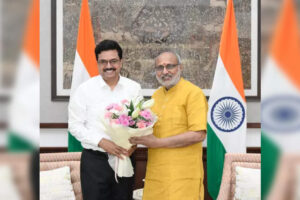Comprehensive Analysis for 18 June 2025
51st G7 Summit: India’s Strategic Engagement in a Multipolar World
Prime Minister Narendra Modi’s sixth consecutive participation at the G7 Outreach Summit in Kananaskis, Canada, underscored India’s evolving role as a bridge between advanced economies and the Global South. Hosted under Canada’s presidency with the theme “Protecting Communities, Building Energy Security, and Securing Future Partnerships,” the 2025 summit marked 50 years of G7 cooperation while addressing contemporary geopolitical fractures. Modi notably emphasized India’s commitment to “affordable, reliable, and sustainable energy” during the energy security session, positioning the nation as both a climate stakeholder and development model. His bilateral engagements with Germany, Canada, Ukraine, and Italy highlighted India’s nuanced diplomacy – balancing Western alliances with independent strategic interests. The G7’s transformation from the 1975 “Group of Six” (expanded to include Canada in 1976) reflects its adaptive mandate, though it now represents just 10% of the global population despite accounting for 30% of world GDP. India’s consistent invitation since 2019 signals recognition of its fifth-largest economy status and its capacity to amplify Global South priorities in climate action and digital transition dialogues.
Revised Green India Mission: Blueprint for Carbon-Neutral Growth
Union Environment Minister Bhupender Yadav unveiled an ambitious revision of the Green India Mission (GIM), targeting 2021-2030 as India’s decade of ecological restoration. Originally launched in 2014 under the National Action Plan on Climate Change (NAPCC), the mission now adopts a “micro-ecosystem approach” to rehabilitate vulnerable landscapes including the Aravallis, Western Ghats, and Himalayan regions. With the Forest Survey of India projecting a potential carbon sink of 3.39 billion tonnes of CO₂ equivalent, the plan mandates restoration of 24.7 million hectares through degraded forest recovery, agroforestry, and wasteland plantations. Strategic interventions will prioritize railway corridors and national highways for green cover expansion, leveraging the mission’s three-tier governance structure chaired by the Environment Minister. Field data reveals promising momentum: 11.22 million hectares were restored by 2020-21, with current annual plantation rates of 2 million hectares potentially adding 12 million more by 2030. This aligns with India’s Paris Agreement pledge to create 2.5-3 billion tonnes of additional carbon sinks while combating land degradation affecting 29.7% of its territory.
Hydraulic Systems: Engineering Backbone of Modern Infrastructure
As a $50 billion global industry, hydraulic technology exemplifies the practical application of Pascal’s Law – where confined fluids transmit force to enable precision machinery. Unlike pneumatic systems using compressible air, hydraulic mechanisms rely on incompressible oils to convert mechanical energy into controlled movement through pumps, valves, and actuators. This principle powers critical infrastructure: excavators lift 20-ton loads with fluid-generated force multiplication, aircraft landing gears withstand runway impact through hydraulic dampening, and automotive brake systems convert pedal pressure into stopping power. The technology’s advantages – high power-to-weight ratios, heat dissipation efficiency, and vibration-free operation – make it indispensable for sectors ranging from manufacturing (robotic arms) to aviation (wing flaps). With steady market growth projected, hydraulic systems remain foundational to industrial automation despite emerging competition from electric alternatives in lightweight applications.
AC Temperature Guidelines: Balancing Comfort with Energy Security
India’s new mandate capping air conditioner temperatures between 20-28°C addresses a critical energy dilemma: cooling already consumes 50 GW (20% of peak power demand), with 15 million new ACs added annually to the existing 100 million units. The Bureau of Energy Efficiency (BEE) recommends 24°C as the optimal default – each 1°C increase saves 6% electricity in a nation where only 20% of ACs are 5-star rated. This policy counters wasteful practices in hotels and offices where temperatures dip to 18-21°C, causing discomfort and unnecessary load on compressors (which consume 60% of AC energy). Scientific validation comes from WHO guidelines linking sub-18°C environments to respiratory illnesses and cognitive impairment, while comfort charts confirm 25°C as ideal with adequate airflow. Implementation challenges include lax Energy Conservation Building Code (ECBC) enforcement and lenient efficiency standards scheduled for 2028 revision. Complementary solutions involve passive cooling architecture – cross-ventilation, green roofs, and thermal-insulated materials – supported by the India Cooling Action Plan’s target to reduce cooling demand by 25% before 2038.
World Day to Combat Desertification: Restoring Land, Securing Futures
Under the 2025 theme “Restore the Land. Unlock the Opportunities,” India joined global efforts to reverse desertification – a crisis costing the world $878 billion annually while degrading 29.7% of its own territory per ISRO’s 2021 atlas. The observance commemorates the 1994 UN Convention to Combat Desertification (UNCCD), which India hosted during COP-14 in 2019. Arid regions like Rajasthan and Gujarat face a vicious cycle where climate-induced drought (40% rainfall deficit in 2024) combines with overgrazing and groundwater depletion to trigger dust storms and biodiversity loss. Economic impacts include 34% yield reduction in rainfed farms and distress migration from districts like Barmer. National responses include the Desert Development Programme’s watershed management, CAMPA-funded afforestation, and mangrove conservation under the National Coastal Mission. Internationally, India’s Bonn Challenge pledge to restore 21 million hectares by 2030 supports SDG 15.3 (Land Degradation Neutrality), though success requires community-led water harvesting and AI-enhanced soil monitoring at the panchayat level.
Kerala’s Plastic Ban: Ecological Imperative for Fragile Landscapes
The Kerala High Court’s prohibition on single-use plastics in hilly tourist destinations acknowledges the unique vulnerability of mountain ecosystems where non-biodegradable waste chokes streams, contaminates soil, and endangers endemic species like the Nilgiri tahr. The ruling exempts durable polypropylene bags (≥60 GSM) while regulating plastic bottles at weddings and government events – a nuanced approach to a complex problem. Implementation hurdles are steep: dispersed settlements in Idukki district lack waste infrastructure, while tourist hotspots like Munnar generate 3.7 tonnes of plastic daily during peak season. This complements national efforts under the 2022 Plastic Waste Management Rules (banning <120-micron bags) and Extended Producer Responsibility (EPR) mandates. Sustainable pathways include “plastic parks” for recycling innovation and traditional alternatives like palm-leaf containers, alongside tourist education campaigns at pilgrimage centers like Sabarimala. The judiciary’s intervention – invoking Article 21’s right to a healthy environment – sets a precedent for ecologically sensitive legislation nationwide.
News in Brief: Policy, Ecology, and Strategic Developments
Strait of Hormuz Tensions: Iran’s threat to close the strait jeopardizes 20% of global oil transit, including 83% of India’s West Asian imports, prompting contingency planning for alternative LNG routes from Qatar.
Tribal Welfare Campaigns: The Dharti Aaba Janjatiya Gram Utkarsh Abhiyan targets 1 lakh villages with doorstep delivery of PM-JANMAN schemes for PVTGs, including housing, electrification, and telecom connectivity.
Unilateral Sanctions Day: UN’s new observance (December 4) condemns coercive economic measures after a 116-51 vote, challenging U.S. and EU sanctions regimes against Venezuela and Iran.
Cotton MSP Operations: CCI’s procurement of 100 lakh bales at ₹6,620/quintal supports farmers amid a 133% import surge, though exports face pricing challenges from cheaper international cotton.
Industrial Corridors: Andhra Pradesh emerges as India’s only state with nodes across three NICDC corridors (Chennai-Bengaluru, East Coast, Bengaluru-Mumbai), boosting electronics and textiles manufacturing.
Turmeric Cultivation: Kerala farmers adopt turmeric as elephant-deterrent crop, leveraging India’s 70% global production share and the new National Turmeric Board’s export promotion initiatives.
NISAR Satellite: NASA-ISRO’s Synthetic Aperture Radar (SAR) en route to July launch will monitor ecosystems and disasters with L/S-band sensors, mapping Earth every 12 days from low orbit.
INS Arnala Commissioning: India’s first indigenously built Anti-Submarine Warfare Craft (80% local content) enhances coastal security with waterjet propulsion and mine-laying capabilities from Visakhapatnam.
Synthesis: Interlinking Ecology, Economy, and Global Governance
The day’s developments reveal intricate connections between environmental stewardship and strategic policymaking. The G7 Summit highlighted how energy security dialogues must incorporate Global South perspectives championed by India, just as the Green India Mission’s carbon sink targets align with global climate frameworks. Similarly, Kerala’s plastic ban demonstrates that localized ecological protection – especially in biodiversity hotspots – requires judicial reinforcement of regulatory mechanisms. For UPSC aspirants, these themes converge on core governance principles: adaptive international engagement (G7), evidence-based resource management (AC guidelines), and constitutional environmentalism (plastic ruling). As India navigates desertification and cooling challenges, success hinges on integrating traditional knowledge (turmeric farming) with cutting-edge technology (SAR satellites) – a holistic approach essential for sustainable development in an era of climate uncertainty.
Source link



